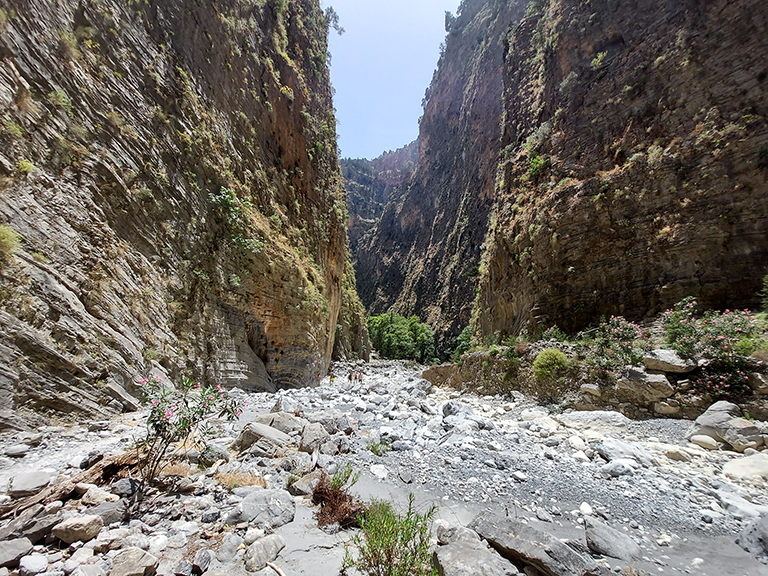
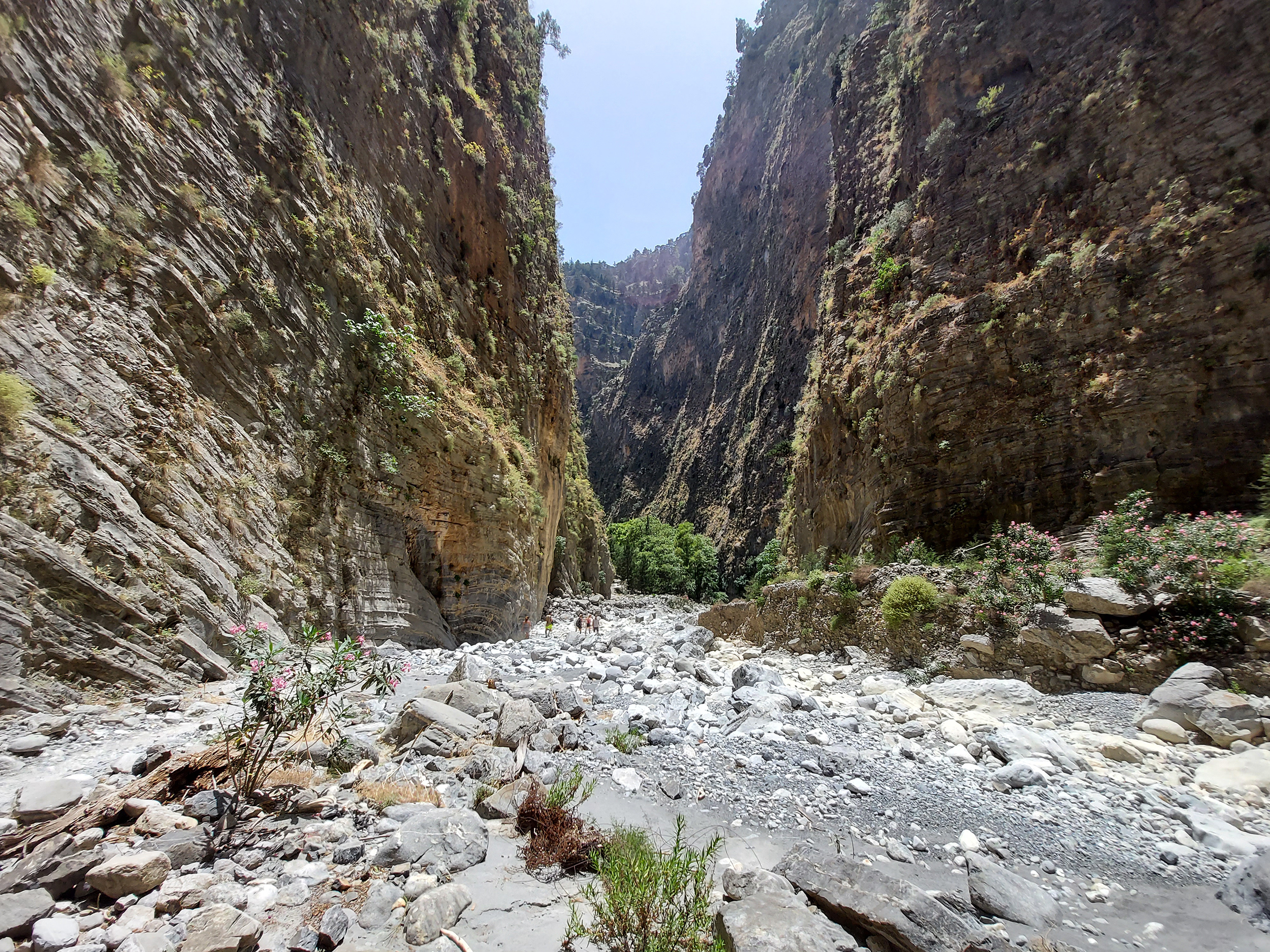
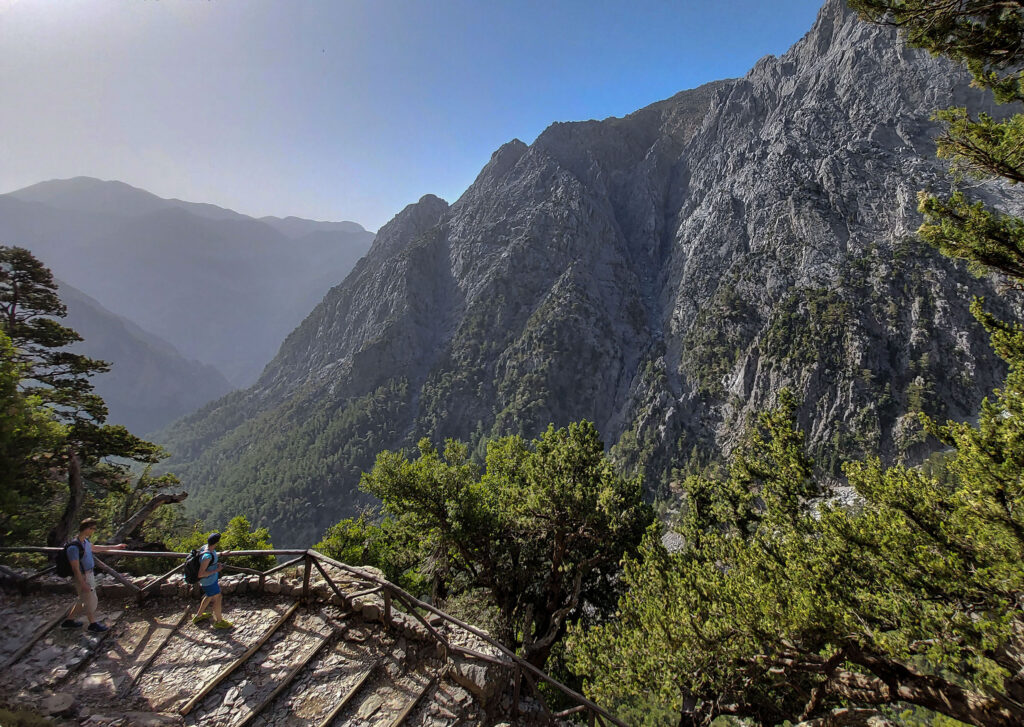
The limestone rocks of the Cretan mountains are intersected with canyons, caves and pits. In Crete, there are about 150 canyons of different sizes and 80 different types of pits and caves, 8 of which can be visited by tourists.

In addition to the Samaria canyon, there is a net of other smaller side canyons, which were also formed under the influence of the river erosion.

The first 2 kilometres starting from the Omalos Plateau, the trail descends steeply and winds through numerous serpentines to the Samaria canyon itself.

Samaria Canyon was named after the village of the same name, which is located in the canyon itself, and which has been completely abandoned since 1962. The term Samaria itself comes from the nearby church of Osia Maria, that is, Saint Mary.
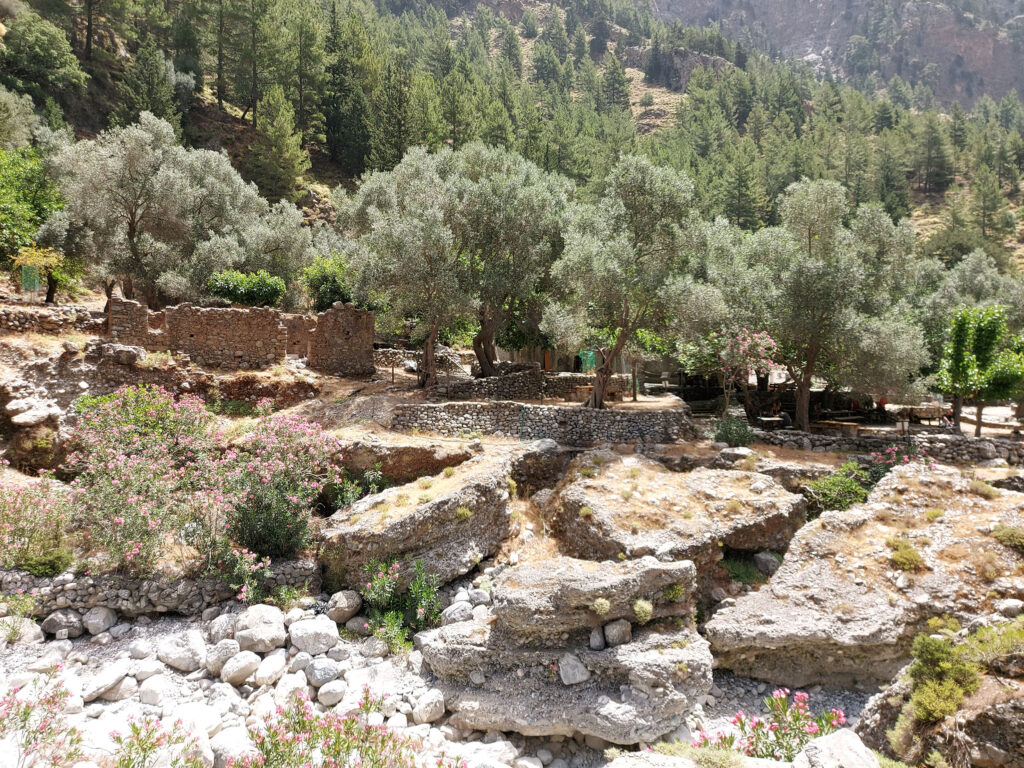
During the wars against the Turks in the 19th century, and later against the Germans in the Second World War, local fighters found refuge and protection here.
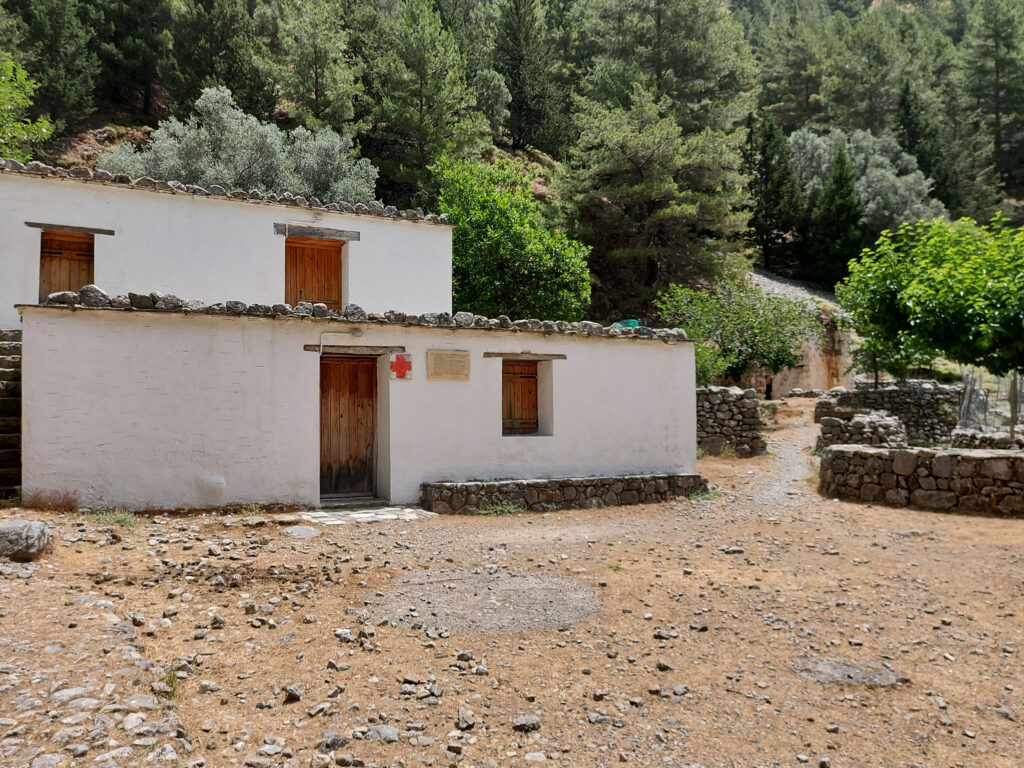
A military hospital from the Second World War.

Numerous chapels were built along the entire canyon. This chapel is dedicated to St. Nicholas.

In the chapel there is an icon of St. Nicholas, in Greek Agios Nikolaos.

Samaria has been inhabited since ancient times. Caves served as sanctuaries to ancient deities. Instead of an altar, stones were stacked to perform the ritual ceremony of animal sacrifice, as evidenced by archaeological finds of bones.
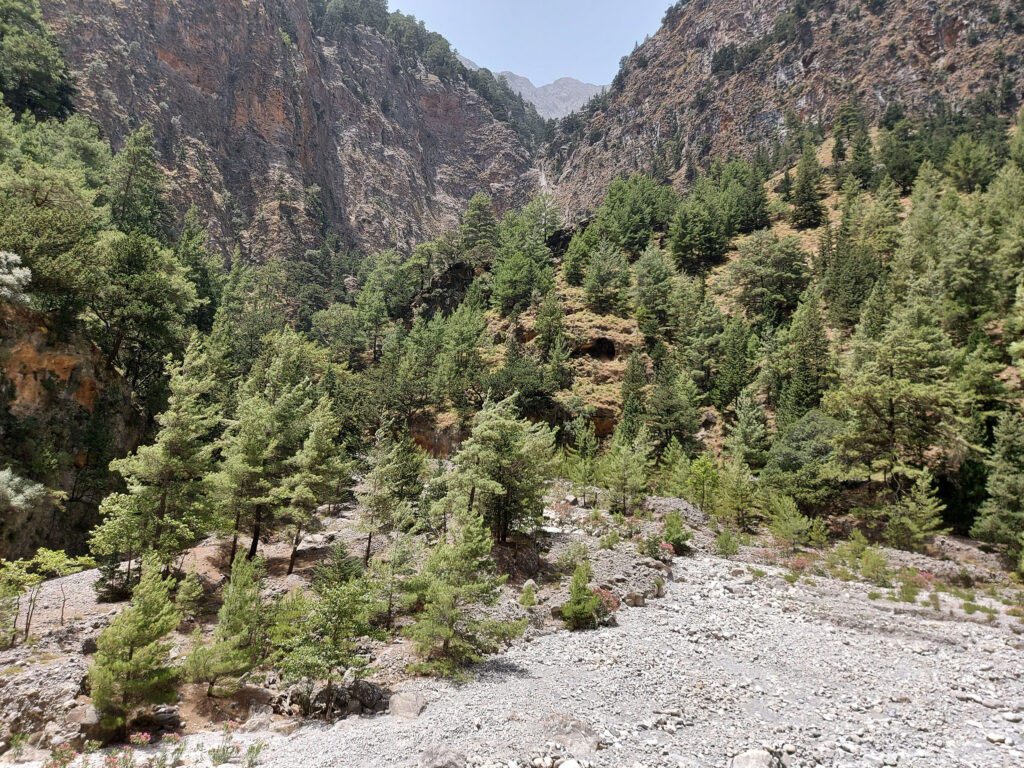
In some places, the canyon is quite wide…

… and in some it gradually narrows. The Iron Gate is the narrowest part of the canyon, only 3 m wide and 500 m deep.
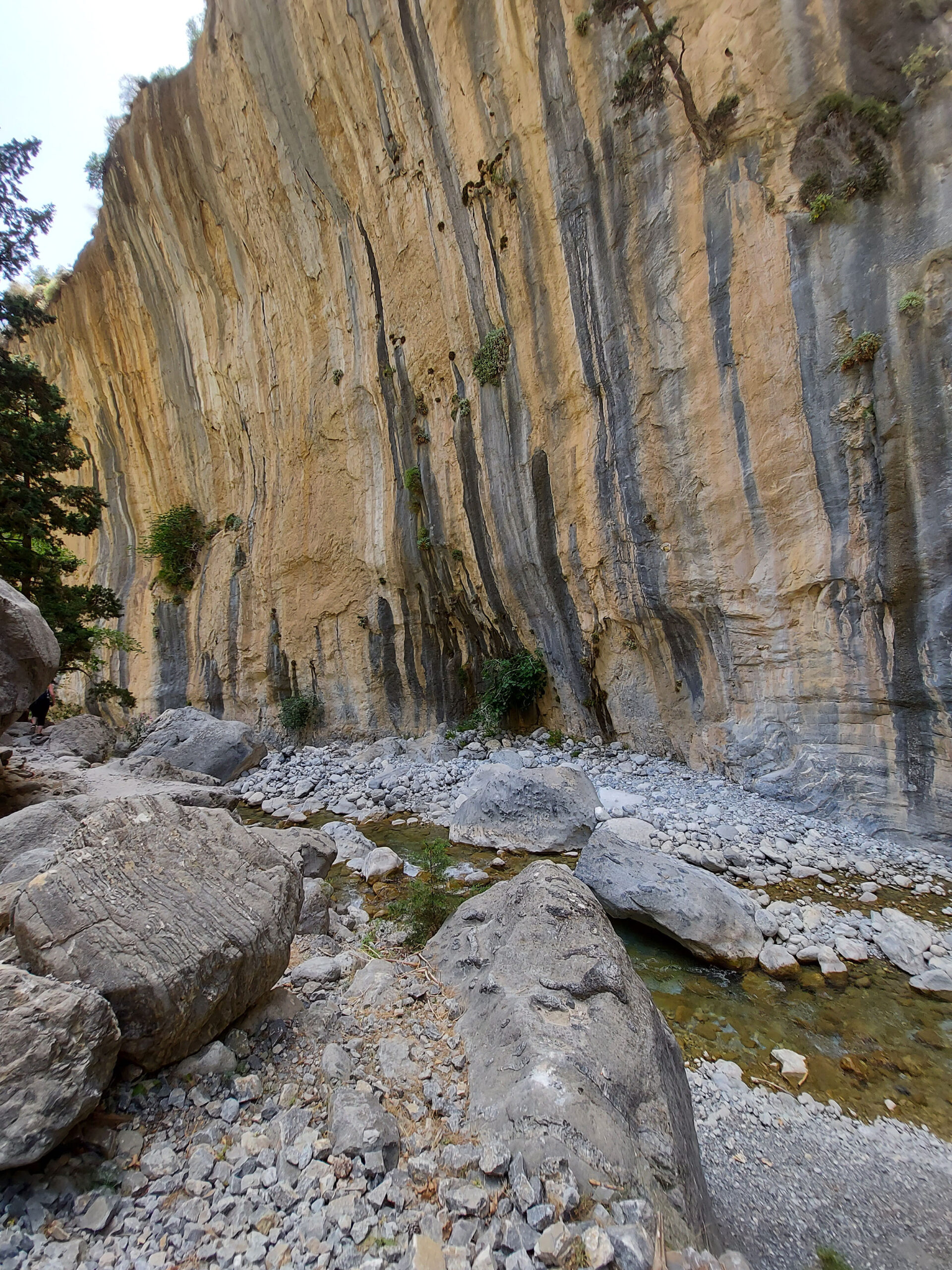
The colors and shapes of the rocks in the canyon are constantly changing. In one place, a black-yellow rock rises.

In some places, the river in the canyon has dried up. Water reappears downstream, which means that the river is partly a sinkhole. Sinkholes are characteristic of limestone terrains.

Wooden pontoon bridges help with river crossings.
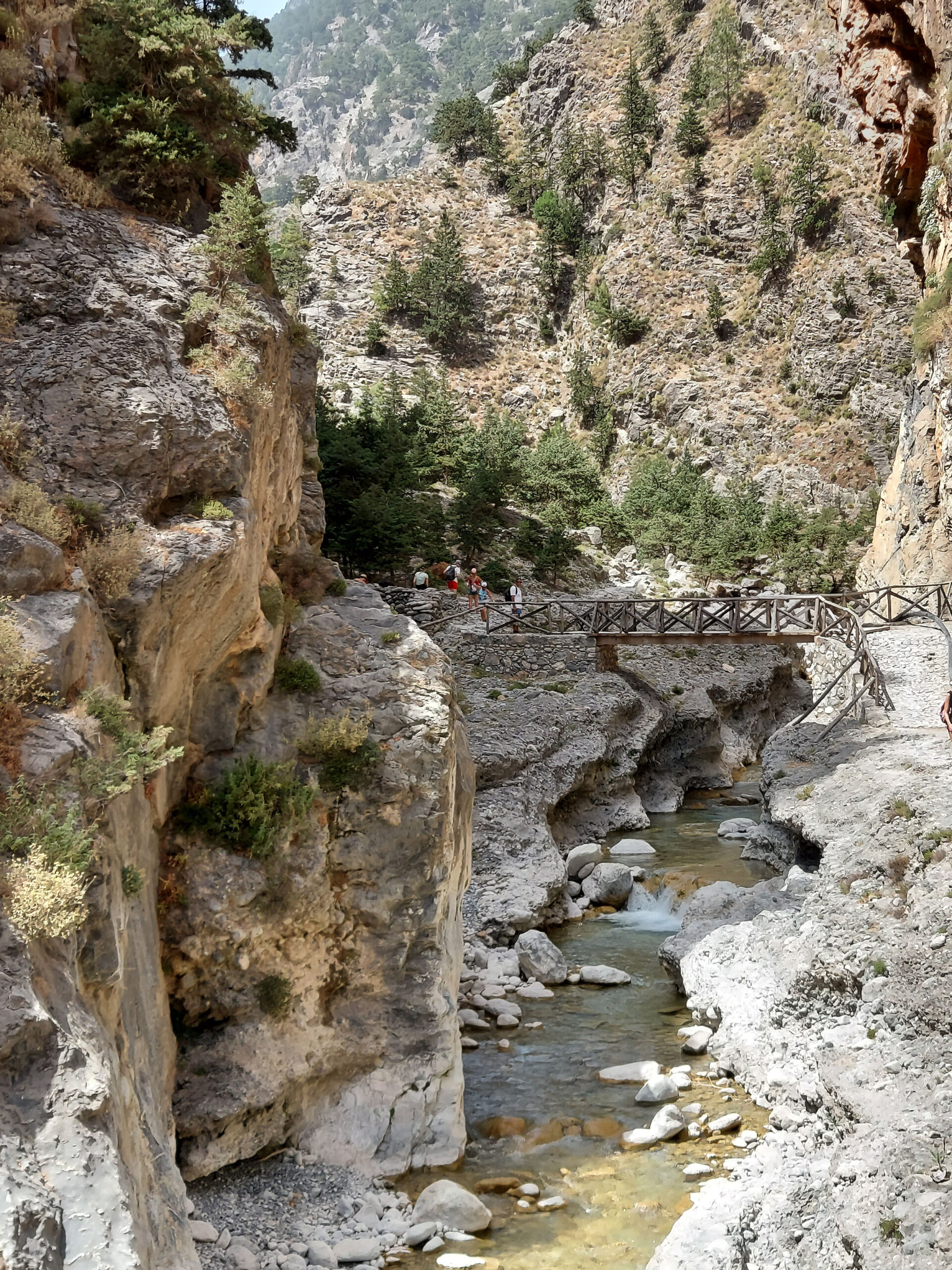
In some places, real wooden bridges have been built.

The path passes through rocky talus.
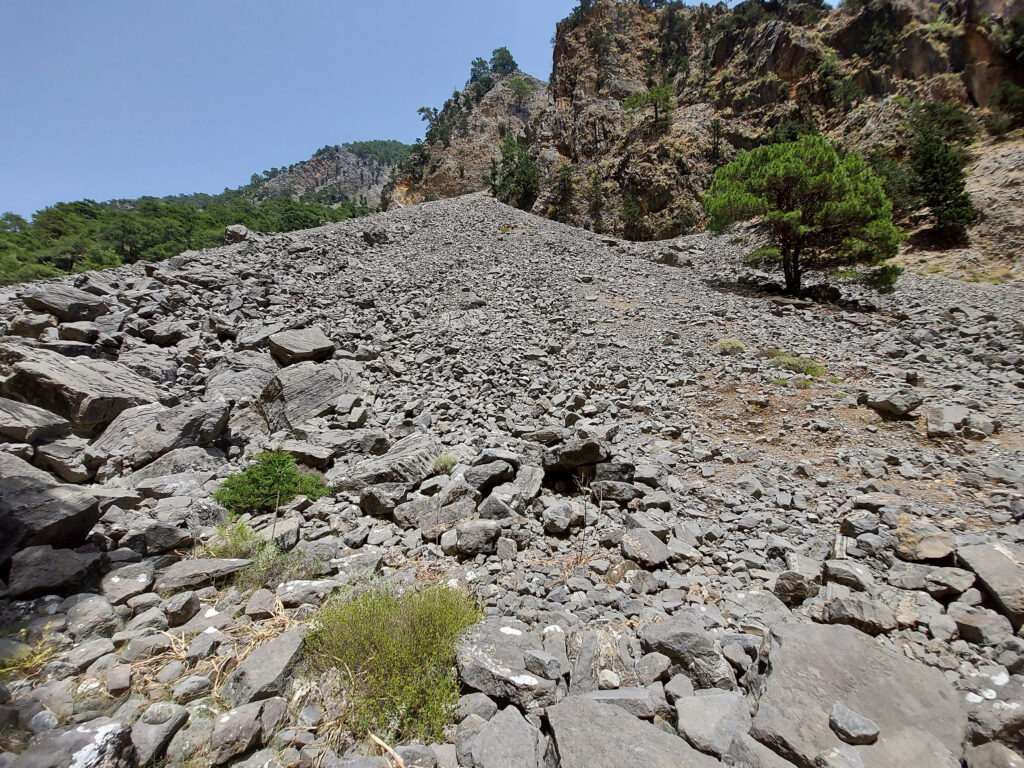
Such rocky talus are formed on steep slopes, when parts of rocks fall off and roll. The broken pieces of rock stop at the foot of the slope. Rocky talus are mainly formed from limestone rocks, because they are more susceptible to physico-chemical decomposition.
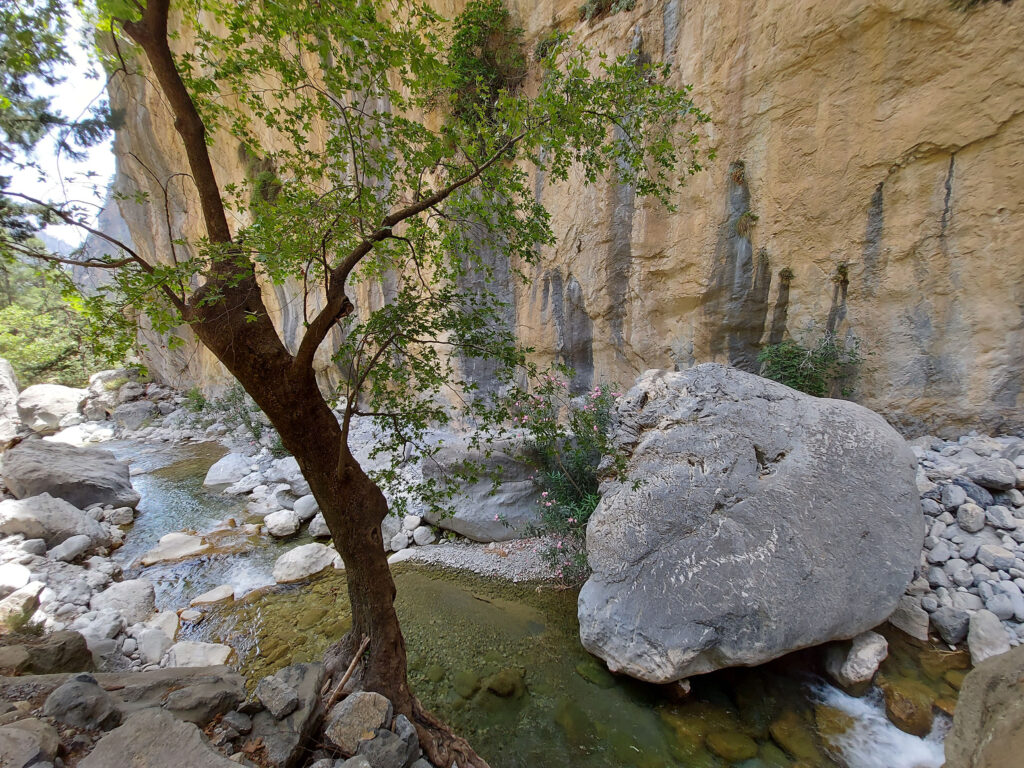
In the bed of the river that flows through the canyon, you can see large rocks, which got here during a landslide. These boulders are beautifully worked and rounded under the influence of the river and the abundant amount of water that flows in winter and spring. Water exerts a two-fold influence on the rock: directly by its movement it rounds the surface of the rock and indirectly – by friction, when it drags with it smaller rock material – small stones, which come into contact with the large rock in the river bed.

At the mouth of the Samaria river into the sea, you can see small, rounded stones that were transported by the water during the spring floods, after the melting of the snow from the surrounding mountains.
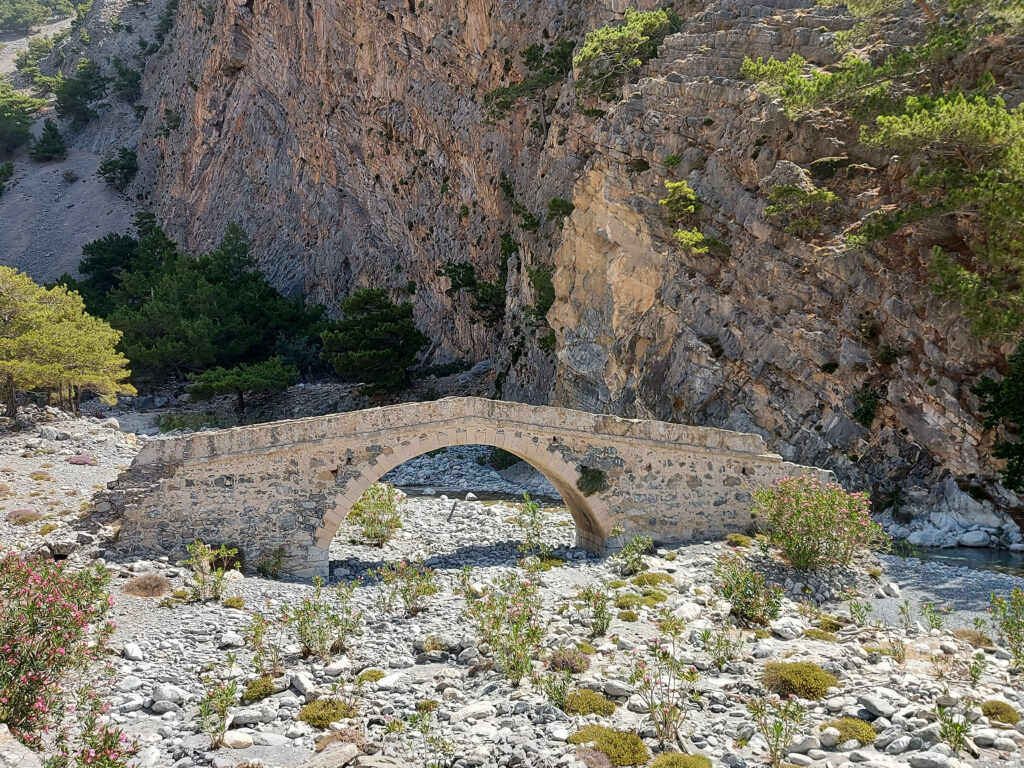
The Samaria Canyon ends not far from Agios Rumeli. In front of the village you can see an old bridge, probably built in the time of the Turks. Similar bridges can be seen in the northern Greece in the area of Zagori.
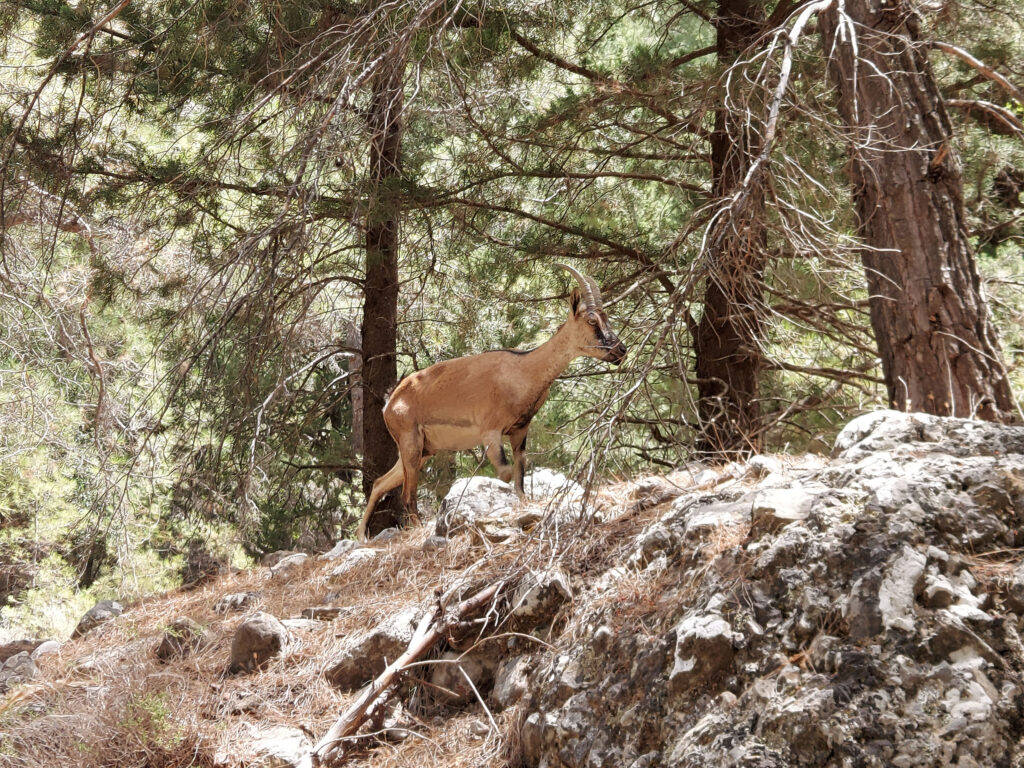
In the canyon of Samaria lives a species of wild goat, called kri – kri, Agrimi or Cretan ibex. The male, female and cubs have horns. Archaeologists believe that the kri – kri goat was brought to Crete by ships as early as the Neolithic period, when it was bred as a domestic animal. At one point, the Cretans stopped breeding and the goat became a wild animal. In order to preserve the population of this wild goat, back in the 60s of the twentieth century, a decision was made to ban the hunting of kri – kri and a national park was established.
However, a new danger arose today. As there is less shepherding in Crete, domestic goats roam freely in the mountains of Crete and come into contact with Kri-Kri goats. Mating took place between a female domestic goat and a male Kri-Kri, which led to the appearance of a mixed species, which threatened the existence of the Kri-Kri goat species. The survival of the species depends on the female kri-kri, who persistently refuse to mate with native goats. The picture shows a cri cri goat, not a mixed breed, which can be recognized by the characteristic black stripe on the back.
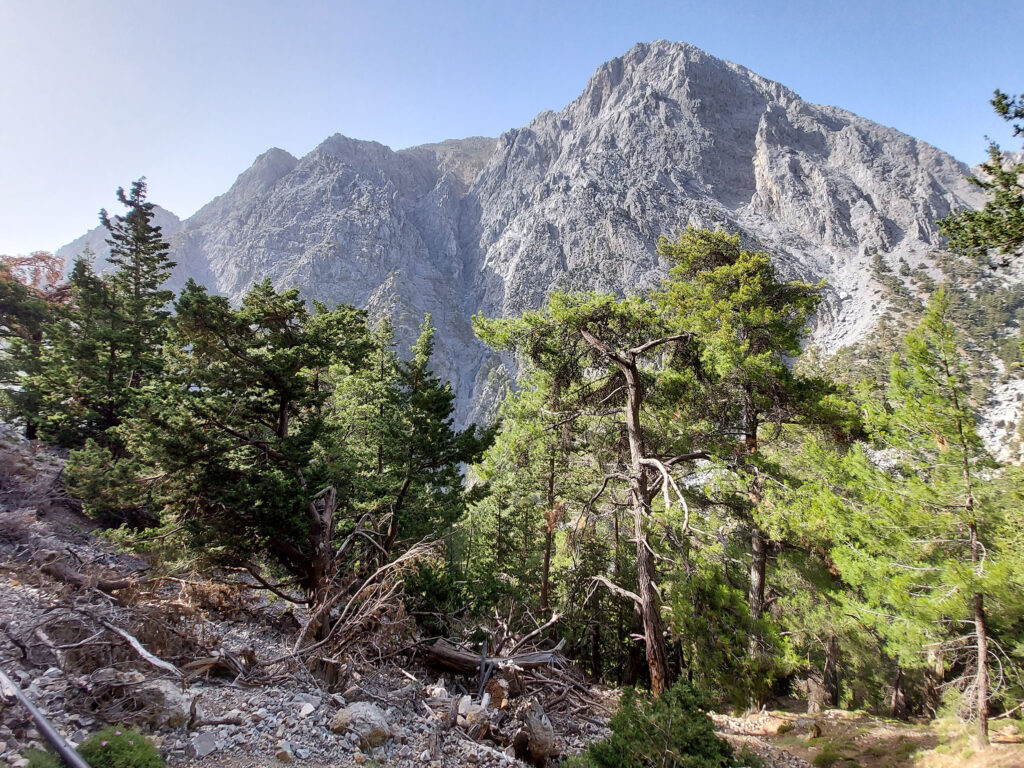
In addition to pine, an endemic type of cypress grows in Samaria – the Cretan cypress. The Latin name is Cupressus sempervirens var horizontalis. The term endemic species means that this cypress grows wild only on Crete and nowhere else, but it can be cultivated in other countries as well. The Cretan cypress is actually a subspecies of the much more widespread Mediterranean cypress. We imagine the cypress as an elongated, vertical tree that we often encounter all over the Mediterranean. The Cretan cypress has a different shape: the branches grow horizontally, so the crown gains in width and mass. In ancient times, cypress wood was used to build ships, and it is believed that the pillars of the Minoan palace in Knossos were made of cypress wood.

The Samaria canyon forest is a mixture of Calabrian pine and cypress. Calabrian pine was often extracted in the past, especially its resin. On some old trees, you can see scars from the knifes used to cut the trees to collect the resin. The resin was most often used as an additive to Cretan wine, which is called rectina and has been made for 2000 years. Calabrian pine grows at altitudes of 0-1200 m above sea level. Calabrian pine is not an endemic species. It also grows in other areas of the eastern Mediterranean, in Asia Minor and in the Middle East. Its native area is the Eastern Mediterranean, and later it was also planted in the Italian region of Calabria. A Calabrian botanist was the first to give a description of pine at the beginning of the 19th century and called it Calabrian pine, in Latin Pinus brutia. Brutia is the ancient name for Calabria.
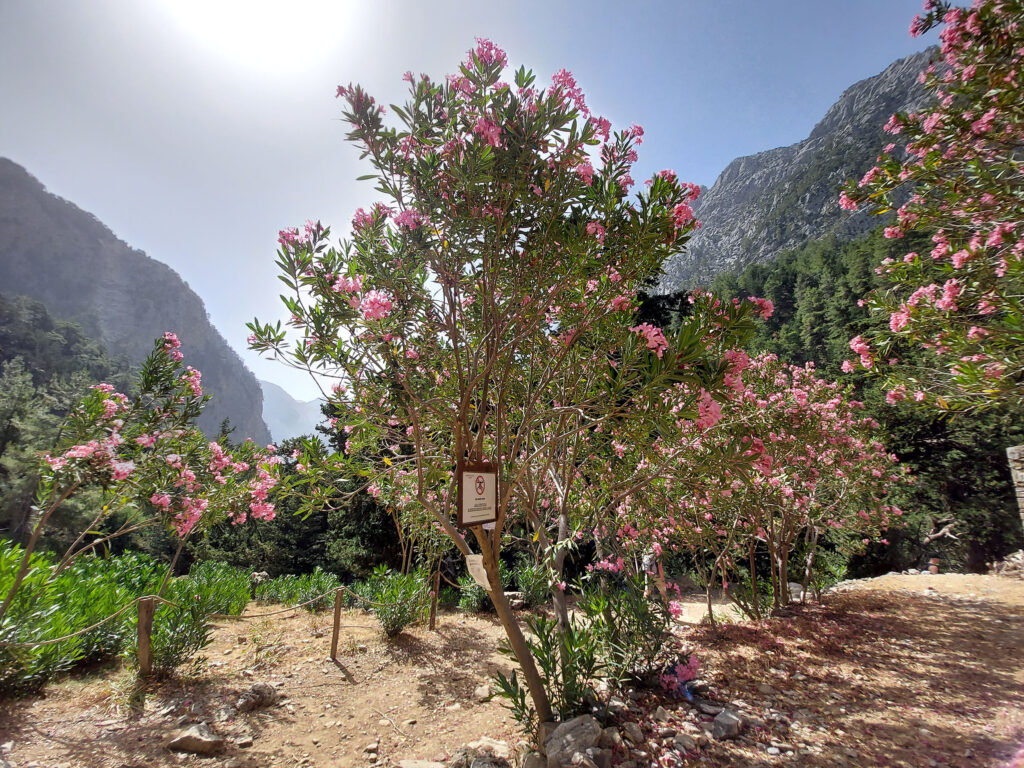
Oleander trees grow along the riverbed of Samaria. Oleander is classified as a shrub rather than a tree and has a characteristic pink flower. Oleander is a wild plant whose habitat is mainly canyons. Cultivated oleander with white, red and orange flowers are usually grown next to the roads.
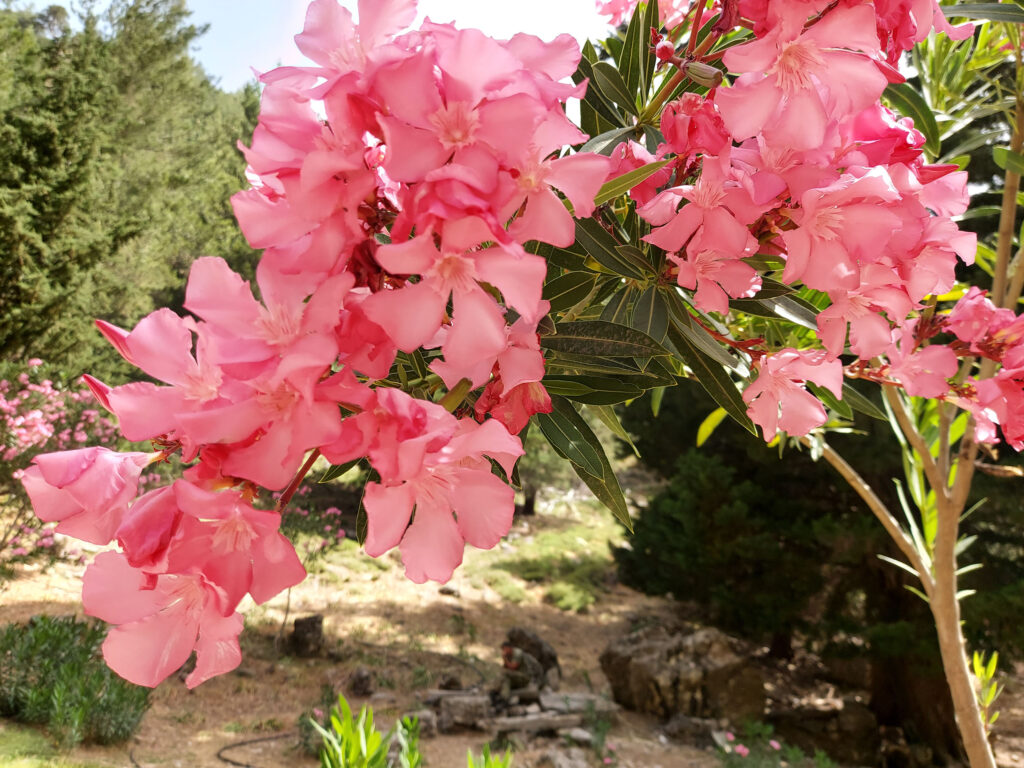
A wild oleander that grows in canyons can only have pink flowers.
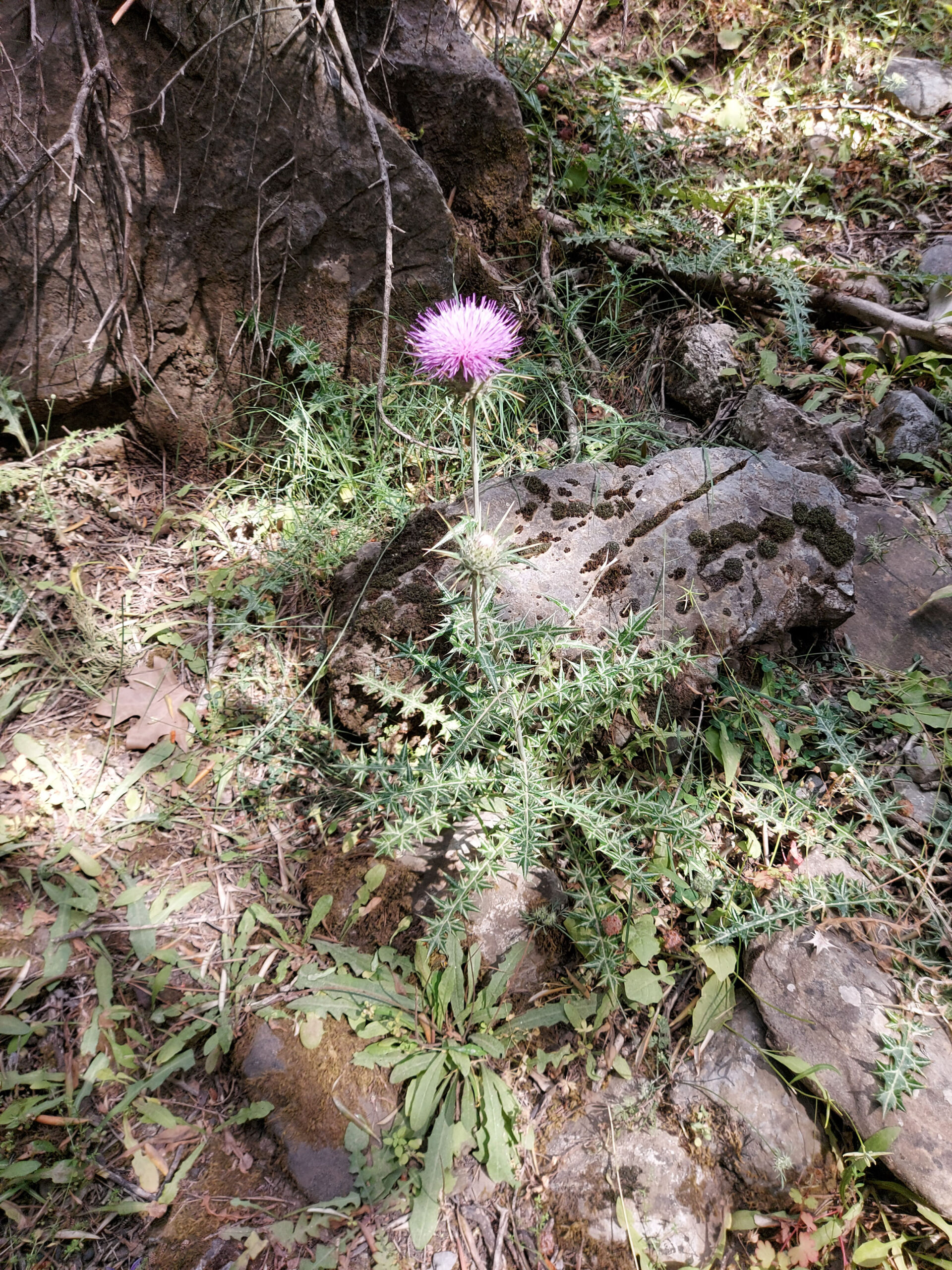
Samaria is rich in a large number of endemic plant species, which can only be seen during spring. Some species of endemic orchids grow only in Calabrian pine forests. Unfortunately, the photos were taken in June, when most of the plants in the canyon had bloomed. One of the endemic species is this Woolly Distaff Thistle – Carthamus lanatus, which grows all over the Mediterranean. Woolly dagger has mostly yellow flowers, while in this subspecies you can see a small pink flower, which indicates that it is a subspecies, which grows only in Crete and in professional terminology is called Carthamus lanatus ssp. ruber.

The ‘ladanies’ (Cistus) are very beautiful evergreen shrubs which prefer sunny, dry locations. Very often, and particularly on hot days, whole slopes covered with cistus seem to breathe out their scent. The flowers, which resemble roses, have five white or pink petals and numerous yellow stamens. These are aromatic plants, and from certain species ladanum is extracted, a gum which is secreted by the leaf glands and has pharmaceutical properties. According to Dioscurides, it was collected either from the hair of goats, to which it had adhered, or with leather strips, as was still the practice on Crete in 1700, at the time when Tournefort was on his trav- els. Four species are found in Greece, two with white and two with pink flowers.
Cistus Creticus is the cistus from which gum ladanum was at one time collected. It is a shrub which produces many branches with short, white, sticky hairs and stalked leaves, opposite and gland-bearing, undulating at the edges. It has flowers of up to 6cm with short sepals and pink petals of a particular shape which gives a rather untidy appearance. It is often found in large populations on stony slopes and in thickets.

Great Dragon (Dracunculus vulgaris) is an impressive plant, with a height which often exceeds 1 metre. The spathe is lanceolate, purple on the inside and yellowish-green on the outside. The spadix is slender, long and purple, but shorter than the spathe. The leaves are large, deeply cut and wavy with white spots. During the flowering period, the plant emits a strong, rank odour which attracts flies.
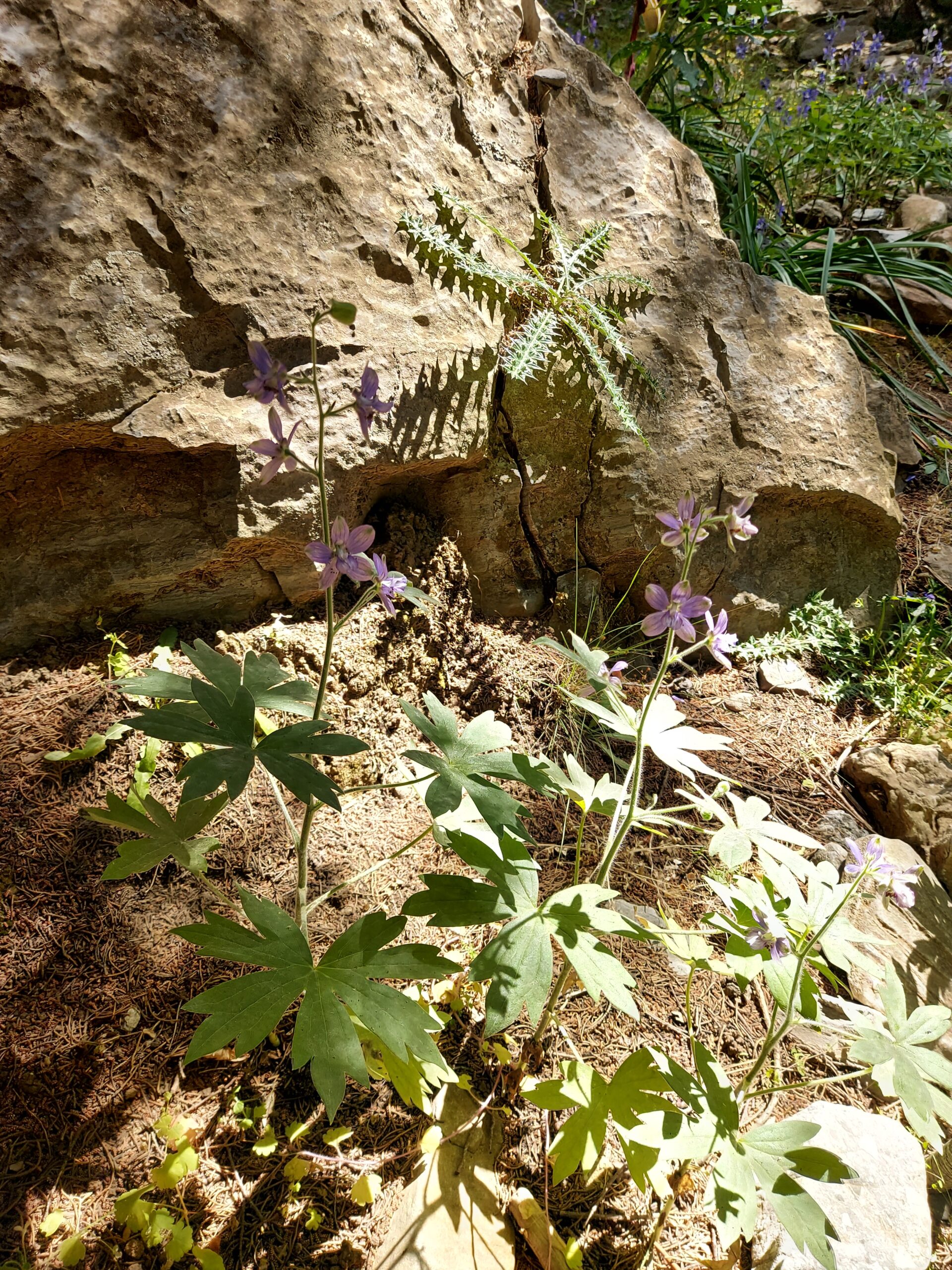
Delphinium (Delphinium staphisagria) is hairy plant with a strong stem and height which often exceeds 1 metre. It has large, palmately lobed leaves, the lobes themselves either entire or trilobate, and sharply pointed. The azure or darker blue zygomorphic flowers are in a raceme at the end of the stem and distinguished by their characteristic, very short spur. The dust from the seeds has been used since antiquity to kill lice. Found in barren, stony places, fields and on roadsides.

Summer savory (Satureja thymbra) is a small phrygano plant, much- branched and loosely covered with white hairs, with a scent similar to that of thyme. It has inverted ovate leaves, pointed and with ‘eyelashes’ near the base. The flowers are light pink and arranged in whorls with calyces that are pointed and hairy. A very aromatic plant which is often used as a flavouring in meat dishes. Found in dry, stony locations and in phrygana.

The euphorbias (Euphorbia) or spurges as they are commonly known, belong to the family of the same name (EUPHORBIACEAE) and constitute a very large, polymorphic genus which includes both dwarf plants and small trees. All of the euphorbiae produce a milky juice which is an irritant and poisonous, as is the rest of the plant. Very typical are the flower spikes in which the male and female flowers are protected by two bracts which form a cup. The euphorbiae took their name from Euphorbus, a Greek physician of the 1st century AD who used their milky juice for medicinal purposes.
The most common of the euphorbiae, Mediterranean spurge (Euphorbia characias) is a plant with many erect, strong stems, which are denuded at the base. The leaves are numerous, grey, lanceolate and elongated. The umbel is dense and the cups hemispherical with dark red glands. The name originates from Dioscurides and refers to the stony or rocky biotopes preferred by the plant (harakas = rock).

Many plants manage to survive on vertical rocks. Such plants are called lithophytes. There are two types of lithophytes: one type grows exclusively on rocks, while the other thrives on both rocks and other habitats. Lithophytes grow in rock crevices, where the soil necessary for the plant’s nutrition is retained.
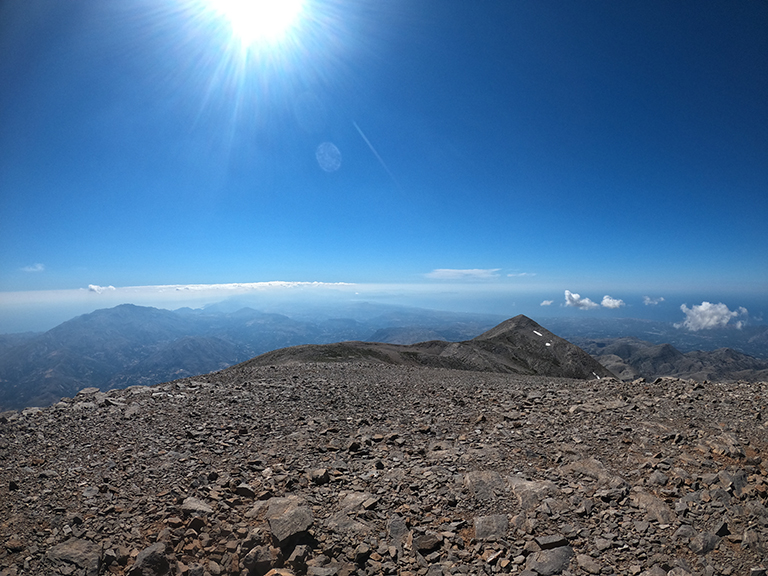
Mount Ida, the highest peak in Crete at 2,456 meters, holds significant mythological importance as the birthplace of Zeus, who w
Read More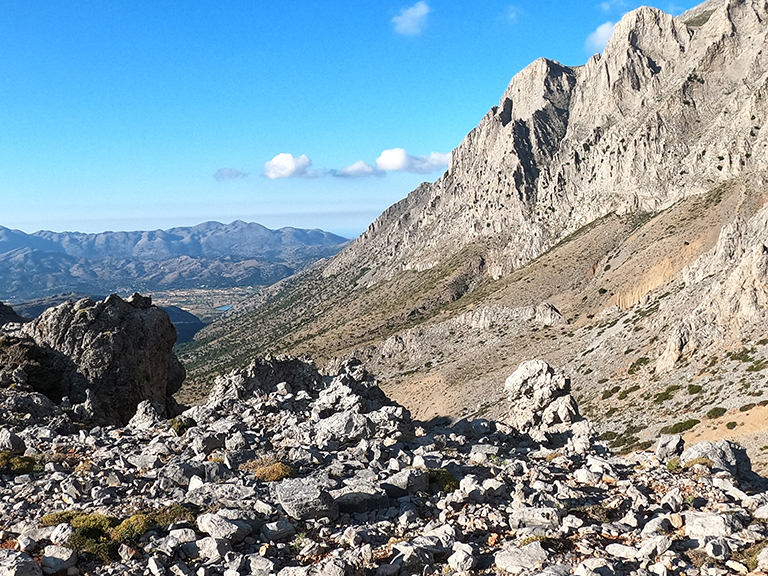
Mount Dikti, a lesser-visited mountain in eastern Crete, offers a unique hiking experience with its limestone composition and mo
Read More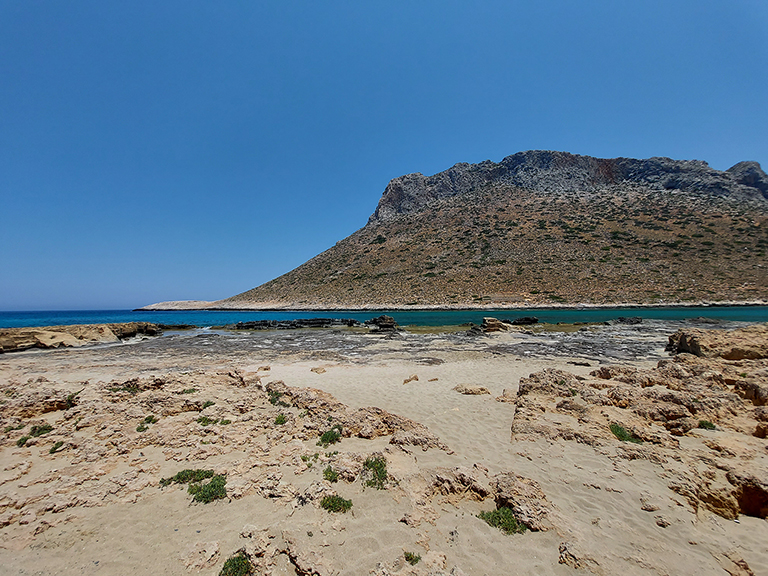
Stavros town, located near Chania town, is famous for its Zorba the Greek beach, which gained popularity after the 1964 movie &#
Read More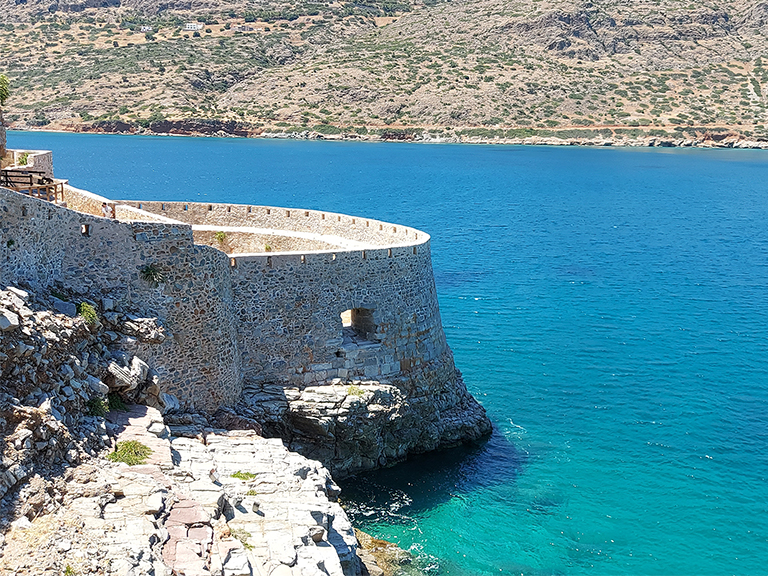
Spinalonga is a Venetian fortress built in the 16th century on a small island in the Gulf of Elounda, Crete. The fortress was bu
Read More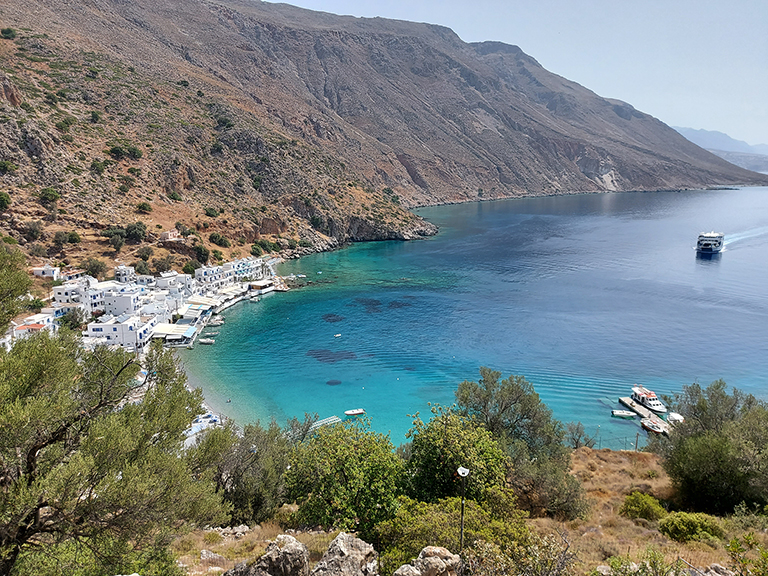
Agios Rumeli is a picturesque seaside town on the coast of the Mediterranean Sea in Crete. The town is a home to several hiking
Read More